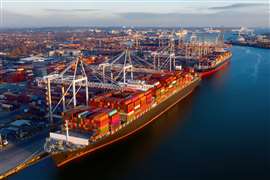Vinci leads €300 million fusion reactor contract
18 January 2013

A consortium consisting of Vinci (58.3%), Ferrovial Agroman (30%) and Razel-Bec (11.7%) has won a €300 million contract to design and construct nine auxiliary buildings that will house world's largest experimental nuclear fusion facility.
Awarded by Fusion for Energy (F4E), an EU organisation for Europe’s contribution to the International Thermonuclear Experimental Reactor (ITER), the contract is for the construction of the €13 billion Tokamak complex at Cadarache, north of Aix-en-Provence in southern France.
Design for the five and a half year contract is scheduled to begin this April, with civil engineering works starting in the autumn. The main building will house the Tokamak fusion reactor – a 28m diameter cylinder, 29m high and weighing 23,000 tonnes. With the two adjacent annexes, this will form a concrete structure 120m long, 80m wide and 80m high.
The other auxiliary buildings comprise the assembly building, a two-story control building and miscellaneous industrial buildings.
The contract also provides for several large (4m X 4m, 40 tonnes) anti-radiation, highly pressure-resistant nuclear doors, to be designed and built by a consortium comprising Vinci subsidiary Cegelec and specialist nuclear contractor Sommer.
The ITER project is a first-of-a-kind global collaboration in the field of energy. It will be the world's largest experimental fusion facility and is designed to demonstrate the scientific and technological feasibility of fusion power.
Fusion reaction
A fusion reaction is the process of fusing atoms to release energy, as appose to splitting an atom in the process of fission – the reaction that powers conventional nuclear plants. The energy released by fusion is three to four times greater than the energy released by fission, according to ITER.
Europe, China, Japan, India, the Republic of Korea, the Russian Federation and the US are collaborating on the ITER project, with Europe contributing half the construction costs and the other six countries making up the rest.






